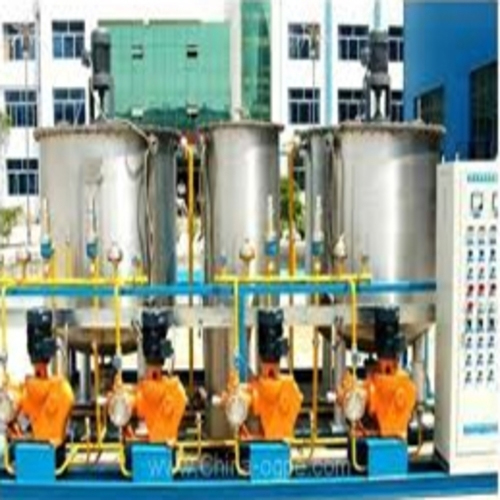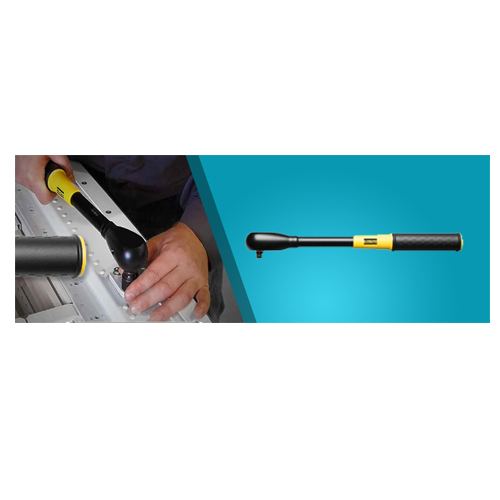Schedule a Call Back
Pumps and Valves : Preparing for Challenges Ahead
 Technical Articles
Technical Articles- Aug 03,11
When studying the Pumps and Valves sector and interacting with the major players, one is struck by a dichotomy in a market valued at around Rs 12-14 billion. The very factors that appear to be, at first glance, negative give the industry numerous advantages. The fact of the matter is that this sector is highly fragmented, and consequently even as some segments are languishing in a downward spiral or stagnating, others are doing very well.

A recent research paper - Industrial Automation & Process Control Practice, by Frost & Sullivan, South Asia & Middle East - had suggested that the CAGR of the sector would be between 15 and 17 per cent for the next 5 years. The research company strongly defends its stance when asked whether the slowdown in upcoming manufacturing plants and if the after affects of the reversionary trends in USA, EU, and Japan would not affect its estimates. "The recessionary impact on the economy was felt the most in 2009 and since the 1st quarter of 2010 the same has gradually gone down and the investment climate has definitely improved since then," says an analyst at Frost & Sullivan.
While the private investments, over and above the investment planned by the public sector companies, in the Steel and Power segments will contribute to increased consumption of pumps and valves, the government's plans for an investment of USD 1 trillion (2012-2017) towards infrastructure development is expected to hold the key.
As discussed above, the Greenfield and Brownfield projects in the metals and power sectors will be the key growth drivers. Oil and gas, and irrigation sectors are the other key sectors," the analyst adds. The report also reiterates the earlier point: The ubiquitous nature of the pumps and valves applications ensures significant after market demand thus contributing to overall growth. In lieu of the above, the market growth discussed as part of the article is very achievable.

Challenges & Resolutions
While there is a consensus among manufacturers and distributors that the challenges are many and that it would take at least 15 to 24 months to return to a 15% growth rate, there is also a rush of companies to enter the segment even as existing players are expanding their capacity.
Major demand for pumps and valves is from installations in end-user industries of oil and gas, water and wastewater treatment plants and fertilisers, while power generation, and heavy industries like cement and metal, which had driven growth in earlier years, are at the moment experiencing a slowdown.
Commensurate to the vastness of the Indian end-user industry and the range of applications involved in each segment, the demand for flow control equipment is also high. Large-scale installations are witnessed every year and the demand continues to pick up at a healthy double-digit growth rate.

While a few home-grown companies like Kirloskar Brothers Limited (KBL) in pumps; and L&T Valves, Audco India Limited and Bharat Heavy Electricals Ltd (BHEL) for valves, do figure in the list of top Indian manufacturers, factors associated with limited technology know-how and financial constraints have impeded the growth of many others. The presence of the unorganised segment is significant in the pumps and valves market when compared to the compressors. Complex design and relatively higher capital required for manufacturing has resulted in the industry being dominated by multinational companies.
In the short term, the major growth drivers for pumps are irrigation and water and wastewater plants, oil and gas (upstream and downstream) and fertilisers, while for valves it is oil and gas, automotive and steel.
So far, government initiatives on infrastructure have led to a healthy growth in heavy industries and others. But, considering that the projected 8-9 per cent economic growth is going to fall short, the government's focus on infrastructure and urban development projects will help the pumps and valves sector maintain a reasonable growth rate. The Planning Commission's infrastructure-related investment projection for the 11th five-year plan of Rs 20,271 billion and its impact on the growth of heavy industries is expected to spur the growth of pumps and valves over the next couple of years.

But as industry experts point out, these figures sound optimistic. One of Chennai's major distributors, Mr K S Desai of New Era Technologies, which has 56 years of experience in this field, points out: With no major plants and projects coming in the short term, future is not too bright.
Another dealer adds that the main requirement for any major project is power, and with power generation at an all time low, expectation of a revival or resurgence in the pumps and valves sectors, let alone manufacturing, is premature.
Yet another challenge that looms large is the influx of foreign players. Buyer preference of the end-user has also witnessed a shift over the last few years, instigating changes in the way suppliers position their products. End-user emphasis on faster return on investment (ROI) has resulted in preference for integrated solution providers. This is particularly a challenge for most of the SMEs, as they lack the required capital and technical expertise. Consequentially it leads to reduced growth prospects and eventually consolidation.
Over the coming years, competition in the industry is only expected to get more intense, with many multinational companies setting up operations in India. Existing multinationals are investing in realigning themselves to aggressively target the burgeoning Indian markets, a fact echoed by manufacturers and distributors alike. And with India having a huge number of unorganised players, they are bound to be affected by the technological changes that are taking place.

For instance, while Indian manufacturers and users prefer steel and metal products, developments in polymer-based compounds have been rapid and astounding. The catch is that these technological benefits have not been passed on to Indian manufacturers leaving India, though a much desired manufacturing hub, more as an assembler than a true-blue manufacturer. Indian manufacturers and distributors also raise a very valid point when they say that these benefits will accrue to the overseas players and not the Indian manufacturing sector as a whole, without any significant contribution to real GDP.
Indian pumps and valves industry is naturally quite pessimistic about the coming months. Be it L&T Valves' Head of Marketing, Mr Ramasubramaniam, FLSmidth's DGM Mr Uday Chandran or Mather & Platt's AGM Mr J Rajasekaran, the recovery period is unflinchingly put at two years, at the bare minimum.
Major Companies Rush to India
The Indian economy is after all the second fastest growing economy in the world. Its all-round growth is catalysed in all vital sectors such as oil and gas, power generation, water handling/sewage treatment, infrastructure development, chemicals, pharmaceuticals, etc. Pumps, valves, and process plant industries are the key industries, which are integral to all these sectors and therefore its growth is largely dependent on these sectors.
The global market for pumps is said to be about US $47 billion, with a growth rate of 4.4% per annum. The domestic industry today is in fact looking up at the overseas markets for opportunities. Mather & Platt, which has been bought over by the UK-based WILO, has estimated its domestic consumption for general industry, including steel, at 15%. Quite a few companies here have also managed to have a presence in the Middle East and African countries, where standards and conditions are similar to those prevailing in India.

FLS acquired Krebs, which has in its product range slurry pumps, as well as the South Korea based Seres Co Ltd, to access the East Asian valves market.
A stable economy, coupled with continuing investments in the core sectors, is expected to fuel the growth of the pumps, valves and compressors market in India. Ongoing infrastructure projects in the power generation, building services, metals, cement, water and wastewater, oil and gas, amongst other sectors, may make the Indian market for this equipment grow at a much faster pace than that of the rest of the world.
Key factors associated with growing economy, increasing middle class (prosperity and spending), rapid urbanisation, and expanding infrastructure needs are also expected to translate into growth. Rising awareness levels about long-term cost savings from adoption of energy-efficient equipment (like in the agriculture sector, in the case of pumps) is expected to further spur the demand.
The Indian pump and valve industry has immensely contributed to the country's economic growth, but its stake in exports is very small. Experts believe that the industry is going through tough times, as the production costs are higher in India as compared to China. However, India's skilled manpower, large talent pool, and quality finish, are indications of better days to come.
Looking Ahead
Each company is actively pursuing its strategy to overcome the onset of tough times, from focussing on low volumes and higher margins to expansion. But they all have one aspect in common - focussing on energy efficiency.
Increasing water requirement due to rapid urbanisation, industrialisation and agricultural growth have enhanced the demand for pumps. With global warming becoming a great concern, the central and state governments are laying emphasis on optimum utilisation of power. Thus, several measures for energy conservation are being adopted. Companies manufacturing energy-efficient submersible pumps are in for great profits as it helps save about 40 per cent energy, compared to conventional water pumps. With the country set to add new capacity at more than 10,000 mW/year for the next decade, the pumps and valve industry would see good opportunities for their products and services.
United States, Europe, and Japan are currently the leading countries needing pumps and valves for their growing industrial processes. However, these countries are presently weighed down by recession, thus resulting in a reduced demand. The market forecasts up to 2013 are revised to a compounded average growth rate of just 0.3% from 3-4%.
Water and sewage, power, building services, industry, and oil and gas will emerge as the major drivers of the global pump market. Predicting a significant but gradual growth for the industry, a source at KBL says, "With the growing expenditure on water supply, irrigation schemes, housing, power plants and industry in general, the pumps and valves industry may attain a considerable growth of 6 to 8%."
While the Indian economy faces major challenges and though challenged globally, companies in this industry must continuously improve productivity, quality, and service to their customers.
It has been proven time and time again that Indian companies are capable of competing globally in quality and prices. With Asia anticipated to account for 43% of the world pump market by 2011, the next five years are most crucial for the Indian industries to prove their potential.
Related Products

Ozone System
Omnicorp Environs & Infratech Co offers a wide range of ozone systems.

SWR ’Slipping’ Wrenches
Reliable
Trade Links offers a wide range of SWR ’slipping’ wrenches.

Gripping Systems – Rgg
Schunk Intec India Pvt Ltd offers a wide range of Gripping Systems – RGG - cleaning
device with shank interface.















